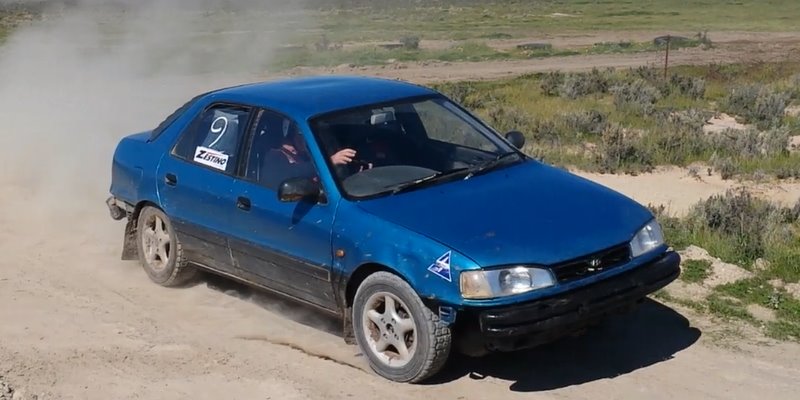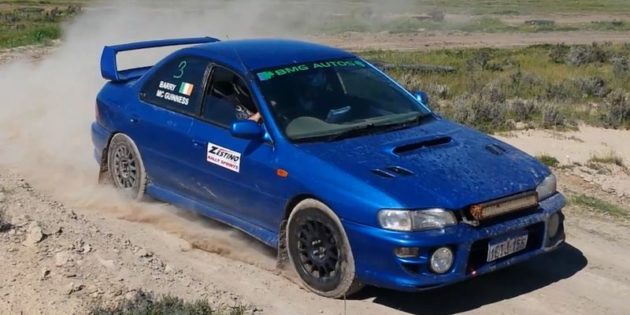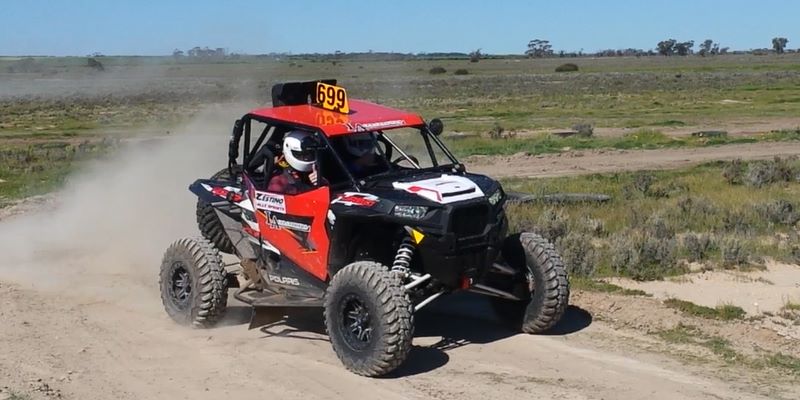What is a Rally Sprint?
In a nutshell, a rally sprint is a mini rally without the extras. A leaner, meaner, version that has been on the treadmill and shed a few kilos. Generally a rally sprint will be comprised of one or two stages of limited distance, say 4 – 10km. There are usually no time controls, no fixed service or long transport sections. The surface can be gravel or tarmac. Events can run day or night.
Who do they suit?
Sprints are the “missing link” between club motorsport such as Khanacross/Autocross and full rally. It’s a stepping stone for some and another level for others. Some rally teams also use Rally Sprints to practice or test their cars. With a compact format and shorter stage distances the racing is relaxed and fun. Keeping the license, vehicle and race gear requirements similar to club motorsport allows more people get involved.

Competitors
Just like a normal rally, there is a driver and co-driver competing together. Many events will allow multiple drivers and co-drivers to use the same car. Some events allow competitors from as young as 14 years old.
Vehicles
Some sprint events do not require a full rally car to compete. This allows more people to experience rally without the commitment of a full house machine. Cars built to Autocross standard are suitable and that means a roll cage is not required. (We do strongly recommend that race harnesses are fitted to increase safety and better hold competitors into their seats.) Vehicles must be mechanically & structurally sound. They must be free of fluid leaks, have a well secured battery and a cover over the positive terminal. Brakes, suspension, seats and belts must be in a safe and serviceable condition. A securely bolted in 1kg fire extinguisher and a triangle indicating the battery position are also required.
Speedway cars and side by side off road buggies (SxS)
Junior Speedway sedans are permitted as they are basically Autocross prepared cars with the glass removed. Side by side (SxS) buggies from reputable manufacturers are also permitted. SxS do need to have window nets and comply with all other vehicle requirements. Competitors using vehicles without a windscreen also need to wear approved eye protection or full face helmets with a visor.
Licenses
Licenses can differ from event to event. Generally a license suitable to compete in Autocross is the minimum requirement for a rally sprint. In some cases single event or day licenses can be used. Both the driver and co-driver need to hold valid licenses.
Race Gear
For most events, long sleeves, long pants and covered shoes are the minimum requirement in terms of clothing. Approved helmets are also required. Event regulations will usually provide the exact details. It is recommended to get yourself all the right gear, particularly if you plan to move into into full rally. If you’re still not sure, you can also contact the organisers.
Format
The event format and other details will be included with the event Supplementary Regulations (Supp regs). Route instructions and/or a map may be provided by the organisers. Some events allow recce so competitors can familiarise themselves with the stage(s).
Racing
Competing vehicles line up at a designated starting point. The officials will start cars one at a time at set intervals.
Competitors traverse the whole stage from a standing start and complete it through a flying finish. A hundred or so metres away after the finish is a stop point. Competing cars will wait here to have their time card marked and their stage time recorded. Once the time card is handed back to competitors, they will usually head back to the pits or an assembly area ready to repeat the stage again.
Classes
There may be different classes within a rally sprint. Sometimes they are classified by engine capacity, drive system (4WD/2WD) or skill level.
Timing
There is a few ways that a rally sprint can be timed to calculate results. The most common way is called “A to A” timing. This system is used on special stage rallies as well. Basically each competing vehicle is given a start time. For example Car 1 is given 10:00am. The car lines up at the start and then at 10:00am a signal is given for the car to go. The clock is now ticking. As car 1 passes through the flying finish at the end of the stage, the clock is stopped eg: 10:07:30.
Stage time
The start time is deducted from the finish time and the result is known as the stage time. In this example the stage time set by car 1 is 7 minutes and 30 seconds. During the sprint all the stage times for each car are added together. The winner is the car with the lowest cumulative total.
More Info
We are often asked plenty of questions about rally sprints. Check out event regulations for the specifics including vehicles and personal equipment. You can find more info by clicking here.





Leave A Response